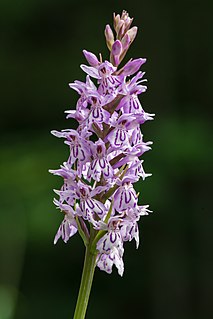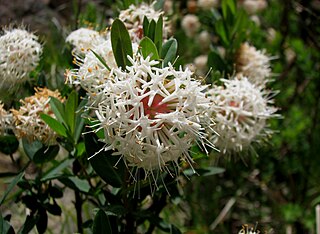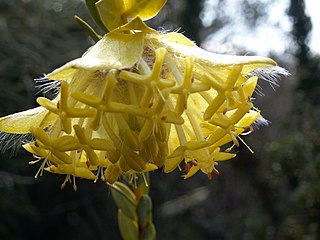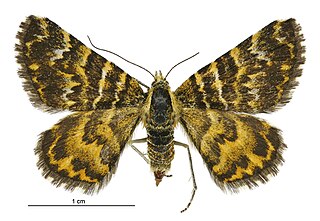
Dactylorhiza, commonly called marsh orchid or spotted orchid, is a genus of flowering plants in the orchid family (Orchidaceae). Dactylorhiza were previously classified under Orchis which has two round tubers.

North Cape is located at the northern end of the Northland Peninsula in the North Island of New Zealand. It is the northeastern tip of the Aupouri Peninsula and lies 30 kilometres (19 mi) east and 3 kilometres (1.9 mi) north of Cape Reinga. The name is sometimes used to refer just to the cape which is known in Māori as Otou and which overlooks Murimotu Island, and sometimes just to the eastern point of Murimotu Island. It is also used to refer to the whole larger headland stretching about five km from Murimotu Island westwards to Kerr Point (Ngatuatata) and including the Surville Cliffs. This wider North Cape, and specifically the Surville Cliffs, is the northernmost point of mainland New Zealand, being about three km further north than Cape Reinga. This article covers the wider North Cape.

Pimelea, commonly known as rice flowers, is a genus of plants belonging to the family Thymelaeaceae. There are about 150 species, including 110 in Australia and thirty six in New Zealand.
Banksia hirta is a shrub endemic to Western Australia.
Rice flower is an ambiguous plant name which may refer to:

Pimelea spicata, the pink pimelea, is an endangered plant, native to New South Wales, Australia. It is also known as rice flower.

Pimelea flava is a shrub in the family Thymelaeaceae which is endemic to Australia.

Pimelea octophylla, commonly known as woolly riceflower or downy riceflower, is a shrub in the family Thymelaeaceae. The speciesis native to south-eastern Australia. It grows up to 1 metre high and produces cream to pale yellow terminal flowerheads with long white hairs. The flowerheads have 25 to 150 flowers. The leaves are 2 to 15 mm long and 0.5 to 5 mm wide.
Pimelea spinescens or spiny riceflower is a critically endangered shrub native to central and western Victoria, Australia. P. spinescens grows to up to 30 cm tall and is found in lowland grassland. The plant is dioecious and unlike others of its genus is non-toxic.

Pimelea ligustrina, commonly known as tall rice-flower, is a shrub species in the family Thymelaeaceae. It is endemic to south-eastern Australia.

Pimelea longifolia, also known as long-leaved pimelea and tāranga, is a small shrub native to New Zealand.

Pimelea suaveolens, commonly known as the scented banjine or silky-yellow banjine is a slender shrub with large, rather hairy yellow inflorescences. It ranges in forest areas of the south-west of Western Australia from New Norcia to Albany.
Pimelea villosa, also known as Pimelea arenaria, is a species of shrub in the family Thymelaeaceae. It is endemic to New Zealand. Its conservation status puts it at risk and declining, as determined by the New Zealand Threat Classification System (NZTCS).
Pimelea gnidia is a species of small shrub in the family Thymelaeaceae. It is endemic to New Zealand. According to the New Zealand Threat Classification System (NZTCS), it is not threatened as of 2012.
Pimelea prostrata, also known as Strathmore weed, is a species of small shrub, of the family Thymelaeaceae. It is endemic to New Zealand.
Pimelea imbricata is a small shrub species in the family Thymelaeaceae. It is native to Western Australia.
Pimelea lyallii, commonly known as the Southern sand daphne, is a species of small shrub, of the family Thymelaeaceae.
Pimelea traversii is a species of shrub in the family Thymelaeaceae. It is native to New Zealand. The specific epithet traversii is in honor of naturalist Henry H. Travers (1844-1928), son of William Thomas Locke Travers.

Pimelea actea is a small coastal plant native to New Zealand. It was named and described by Colin J. Burrows in 2008 as part of a revision of the New Zealand Pimelea, a project he had begun as a Master's thesis in the 1950s and continued in his retirement. Burrows described the species, which for some time had been referred to as Pimelea "Turakina", from a specimen collected in 1968, now in the Auckland Museum. Its species name, actea, means "coastal".

Notoreas elegans is a species of moth in the family Geometridae. It is endemic to New Zealand. This species has a wide distribution in New Zealand and is therefore regarded as not being in need of conservation.












